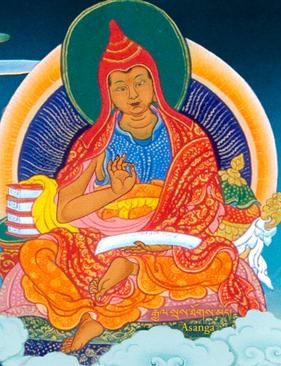Compendium of Abhidharma: Difference between revisions
Jump to navigation
Jump to search
(New page: frame|'''Asanga''' '''Abhidharma-samuccaya''' (Tib. ''mngon pa kun btus'') ''The Compendium of Abhidharma'' was composed by Asanga, one of the 'Six Ornaments'...) |
No edit summary |
||
| Line 1: | Line 1: | ||
[[image:Asanga.JPG|frame|'''Asanga''']] | [[image:Asanga.JPG|frame|'''Asanga''']] | ||
'''Abhidharma-samuccaya''' (Tib. ''mngon pa kun btus'') ''The Compendium of Abhidharma'' was composed by [[Asanga]], one of the '[[Six Ornaments]]', the greatest Buddhist authorities of Ancient India. ''Abhidharma-samuccaya'' is a complete and systematic account of the [[Abhidharma]]. | '''Abhidharma-samuccaya''' (Tib. ''mngon pa kun btus'') ''The Compendium of Abhidharma'' was composed by [[Asanga]], one of the '[[Six Ornaments]]', the greatest Buddhist authorities of Ancient India. ''Abhidharma-samuccaya'' is a complete and systematic account of the [[Abhidharma]]. | ||
==Translations== | |||
*Asanga, ''Abhidharmasamuccaya: The Compendium of the Higher Teaching (Philosophy)'', translated by Walpola Rahula, Sara Boin-Webb, Asian Humanities Press, 2001 | |||
[[Category:Texts]] | [[Category:Texts]] | ||
[[Category:Abhidharma]] | [[Category:Abhidharma]] | ||
Revision as of 19:21, 8 July 2008

Abhidharma-samuccaya (Tib. mngon pa kun btus) The Compendium of Abhidharma was composed by Asanga, one of the 'Six Ornaments', the greatest Buddhist authorities of Ancient India. Abhidharma-samuccaya is a complete and systematic account of the Abhidharma.
Translations
- Asanga, Abhidharmasamuccaya: The Compendium of the Higher Teaching (Philosophy), translated by Walpola Rahula, Sara Boin-Webb, Asian Humanities Press, 2001